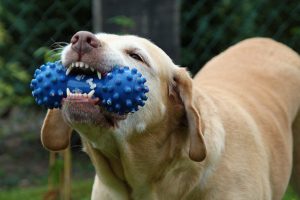Dog Dental Hygiene
When taking care of your pet dogs, don’t forget to include their dental hygiene. They can develop plaque on their teeth which could lead to other dental problems. The most common dental disease dogs are prone to are gum or periodontal diseases. Such problems are preventable with proper care. Here are some tips on how to make sure you take good care of their teeth and gums.
Checking for Signs of Trouble
It is possible that your dog already has a dental problem without you realizing it. After all, if they are feeling any pain or discomfort, they probably will not be able to tell you. If they do start to act differently or show signs of discomfort you cannot really say for certain what the problem is. The same attitude they show when they are hungry could be the same attitude they will show when they feel a toothache.
It is up to you to keep an eye on your pet’s teeth and gums. Regularly checking for possible problems can go a long way in preventing more serious ones in the future. Check for the following early signs of oral disease in dogs:
- Bad Breath
- Constant and excessive drooling
- Deep yellow or brown color on the teeth could be tartar forming
- Difficulty chewing food
- Constantly dropping food when eating
- Drastic change in eating habits
- Constant and excessive pawing with the mouth
- Constant and excessive rubbing of the mouth on hard surfaces
- Red or inflamed gums
- Bleeding gums
If your dog starts to show any of these signs consult your vet immediately. Depending on the findings there are cases where your vet may need to refer you to a veterinary dentist. More on this below.
Regular Vet Checkups and Cleaning
You probably take your pet dog to the vet regularly for a checkup. During these checkups, do you pay attention to what they do? Does your vet also make a thorough examination of your dog’s teeth? Most vets do but it is best to make sure they do. After all, they are the best people to consult on how to best take care of your pet dog’s teeth and gums. Always tell your vet any changes in your dog’s eating habits or if your dog is experiencing any of the trouble signs stated above.
Regular teeth cleaning will also be necessary as your dog grows older. Find out if your vet is qualified to do this. In some cases, it may be necessary to consult a veterinary dentist especially if there is already a possible dental issue that needs to be dealt with. Your vet may be qualified as a veterinary dentist as well but if not they will usually refer you to one if the need arises.
Regular Toothbrushing
Just like us humans, dogs need to brush their teeth regularly. You might be thinking how is this necessary when the ancestors of our present pets didn’t need to brush their teeth to keep them healthy. If you think about it, these ancestors also didn’t have the same diet our pets are used to now, which include soft, sweet and processed food.
Unfortunately, although it is important for them to brush their teeth regularly they cannot do this on their own. Here is what you need to do to be able to brush your dog’s teeth properly:
- Choose the proper toothbrush. Although you can use a toothbrush for people, it is better to get one specifically for dogs. There are two types of toothbrushes for dogs, with handle or finger slip-ons. Both are effective in cleaning their teeth.
- Use only toothpaste specifically made for dogs. Human toothpaste includes ingredients that could be harmful for dogs. Unlike us, they will not spit the toothpaste and will most likely swallow it. Dog toothpaste are safe to swallow.
- Initially, let your dog smell and taste the tooth paste to get them used to it.
- During the first toothbrushing session, do not take too long. Just let your dog get used to the toothbrush in their mouth.
- Apply moderate pressure when brushing. Start with the outer part of the teeth and work your way towards the inner part. Brush in a circular motion along the gum line.
- After the toothbrushing session give your dog some love so that they know they did a good job.
- Work your way to making this a daily ritual.
Following these simple tips will go a long way in keeping your dog’s teeth and gums clean, strong and healthy. For dogs, having healthy teeth and gums goes a long way in making them have longer, healthier and happier lives.
